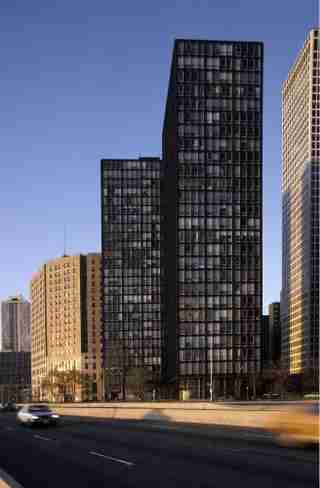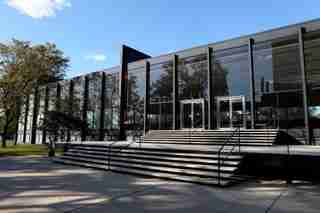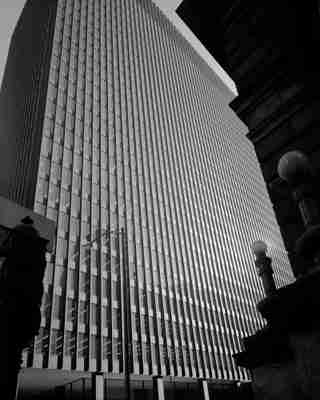How Chicago Sparked the International Style of Architecture in America
In the 1920s and 30s a new type of architecture emerged in Germany and France. Walter Gropius, Le Corbusier , and Ludwig Mies van der Rohe were designing buildings and spaces that were decidedly—and elegantly—plain. They were perfectly rectilinear and free from any and all ornamentation. They used steel and reinforced concrete: new materials. This was boldly innovative. This was the International Style. As World War II erupted in Europe, the early modernists fled to the United States. In Chicago, Mies began churning out impressive oeuvres of metal and glass in the cutting edge International Style. Chicago itself quickly became the prototypical modern city, pushing skyscrapers to record heights, while its architects perfected the finesse of the high-rise apartment, the mid-century corporate headquarters, and the government tower. Here are six examples of the International Style in Chicago, Illinois.

Lake Shore Drive Apartments by Ludwig Mies van der Rohe (1951)
After emigrating from Germany, Ludwig Mies van der Rohe set up shop in Chicago. His designs for two Lake Shore Drive apartment buildings were shockingly plain and featured a steel and glass exoskeleton that would define a whole generation of skyscrapers. This was the first of a kind.

Crown Hall by Ludwig Mies van der Rohe (1956)
Like many of the stark pavilions and glass houses of the era, The Illinois Institute of Technology’s S.R. Crown Hall was a showpiece of volume over mass. Crown Hall’s versatile, columnless interior was boxed beneath a frame Mies once described as “almost nothing.”

Federal Center by Ludwig Mies van der Rohe (1974)
Every element of Mies’ designs for Chicago’s Federal Center was aligned perfectly on a grid system. This rectilinear order expresses a straightforward, pragmatic, and honest attitude, which was wholly appropriate for a massive government complex. The construction began in 1960, and took fourteen years to complete.
Lake Point Tower by proteges John Heinrich and George Schipporeit (1968)
Mies proteges John Heinrich and George Schipporeit adhered to the principles of International Style with consummate discipline, only to bend the rules for Lake Point Tower’s curtain walls. The apartment building’s windows curve gracefully to assure privacy and waterfront vistas.
Inland Steel Building by SOM (1958)
Skidmore, Owings, & Merrill (SOM) is today one of the preeminent name-brand full-service architectural firms. They rose to prominence during the 1950s, when they began to design International Style skyscrapers for clients around the world. In their hometown of Chicago, they produced the half-windowless Inland Steel Building (pictured in the middle).
The Willis Tower (formerly Sears Tower) by Bruce Graham Fazlur Khan (1973)
Where Mies would have emphasized one volume of space, SOM’s Bruce Graham Fazlur Khan strapped together a whopping nine volumes in this bundled tube design. With its roots firmly in the International movement, The Willis (formerly Sears) Tower reigned as the tallest building in the world for over twenty-five years.